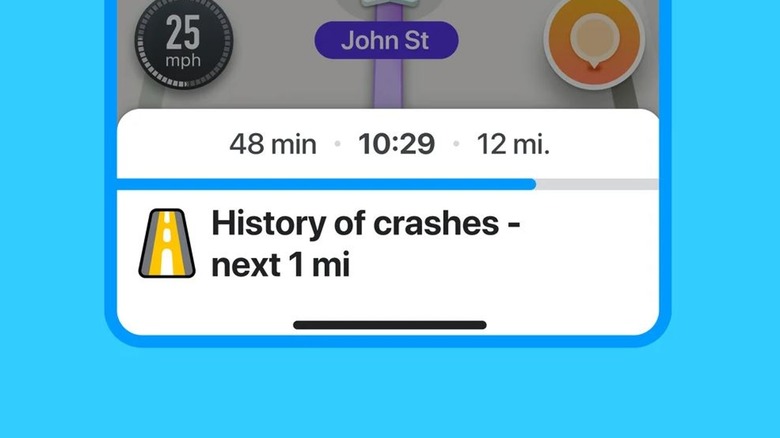Waze Now Warns You On The Riskiest Roads
Despite all the advancements in driving technology in the last few decades — particularly in the realm of safety features — it's still an unfortunate fact that car accidents are one of the leading causes of death in the entire world. According to CDC statistics, nearly 3,700 people are killed every day in car crashes around the world, whether they be drivers or pedestrians.
In an effort to make at least some kind of impact against this grim statistic, Google subsidiary and navigational service Waze is looking to keep drivers informed of dangerous areas. Today, Waze announced the implementation of a new safety feature called crash history alerts.
With this feature implemented, whenever a driver using the Waze service approaches a road or street that has a consistent history of car crashes and accidents, they will be alerted as such and encouraged to drive carefully or re-route to a safer or more conventional path.
"At Waze, we believe driving goes beyond just transportation — it's about helping every driver make smart decisions on the road," the service said in its announcement on Google's press site. "By continuing to bring more safety features to your rides, Waze aims to give greater peace of mind on every one of your drives."
How crash history alerts work
Waze's crash history alerts are assembled by a combination of crash and accident reports from Waze's own userbase and AI algorithms. The algorithm quickly compiles the data from the reports, as well as vital factors like the road's elevation, general traffic density, whether it's a back road or highway, and more to alert you if a particular stretch of road has a history of incidents.
The crash history alert message is designed to be quick and unobtrusive, lest it cause an accident itself. Additionally, if the stretch of road is one that's part of your normal driving route, you won't receive a warning, since you've probably been driving on it long enough to know whether or not it's safe.
While this feature may not be able to stop all accidents, it can hopefully keep drivers informed and aware of any potentially dangerous areas; whether said danger is due to overcrowded, aggressive traffic, steep, slippery conditions, or some other influencing factor. If you know that a stretch of road has a history of incidents, you may think twice about driving on it in order to keep yourself — and, by extension, your car — safe from harm.

